Virtual Reality Training in Higher Education: Exploring its Transformative Impact
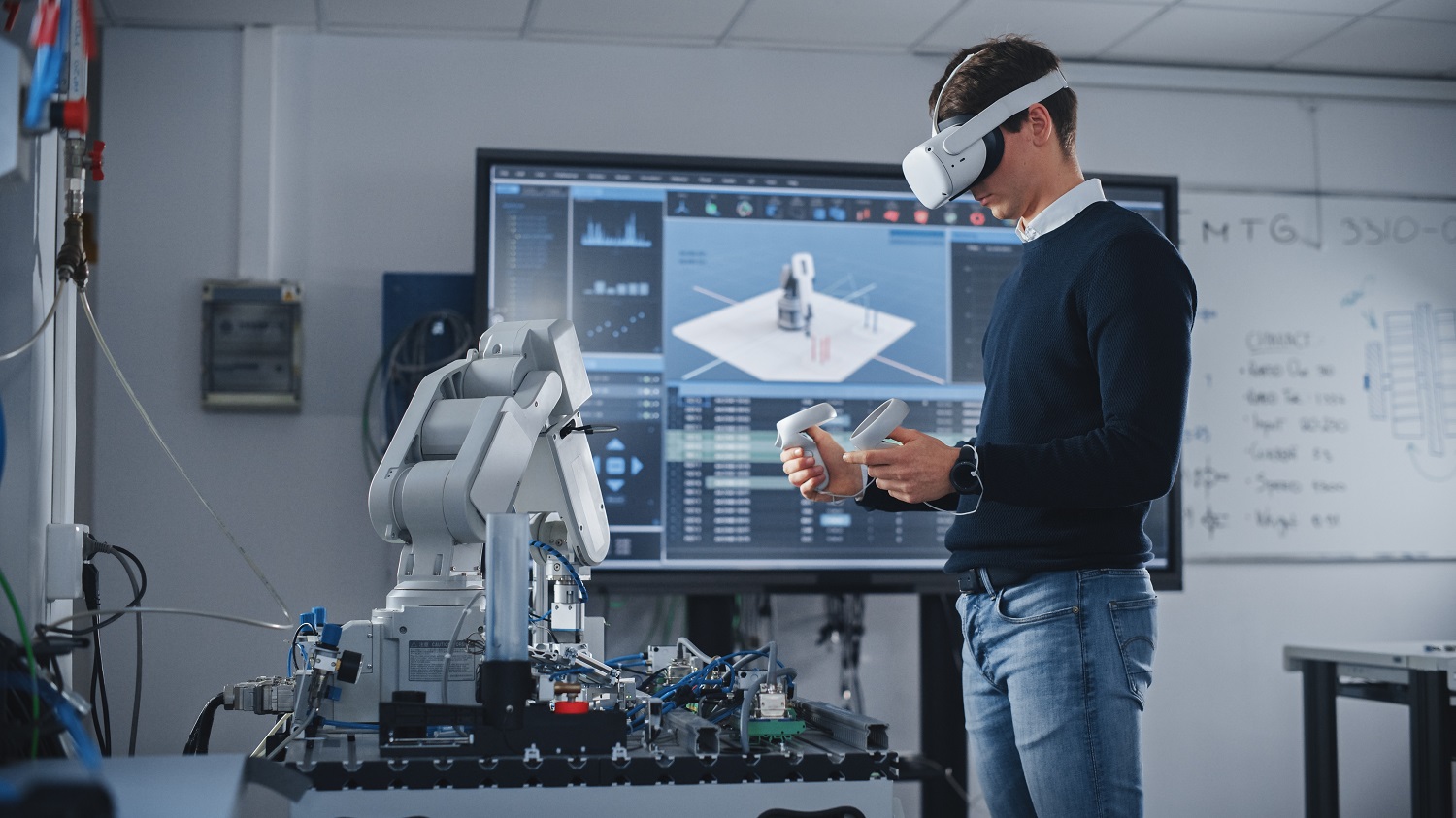
In today's fast-paced and technology-driven world, traditional educational methods may not fully equip graduates with the practical skills and experiences necessary to thrive in their careers.
By overcoming such challenges, Virtual Reality (VR) and its growing relevance in education have paved the way for revolutionary changes in higher learning.
However, as the demand for skilled professionals intensifies, institutions are seeking innovative methods to prepare graduates for real-world challenges. Virtual Reality in education and training emerges as a powerful solution, offering immersive and experiential learning experiences in VR for engineering, medical, and science graduates.
In this blog, we will explore the transformative impact of Virtual reality training on higher education, with a specific focus on higher education students belonging to engineering, medical, and science fields.
So, Join us on this journey to discover how Virtual Reality is reshaping higher education and empowering the next generation of skilled and innovative professionals.
Virtual Reality Training for Engineering Graduates
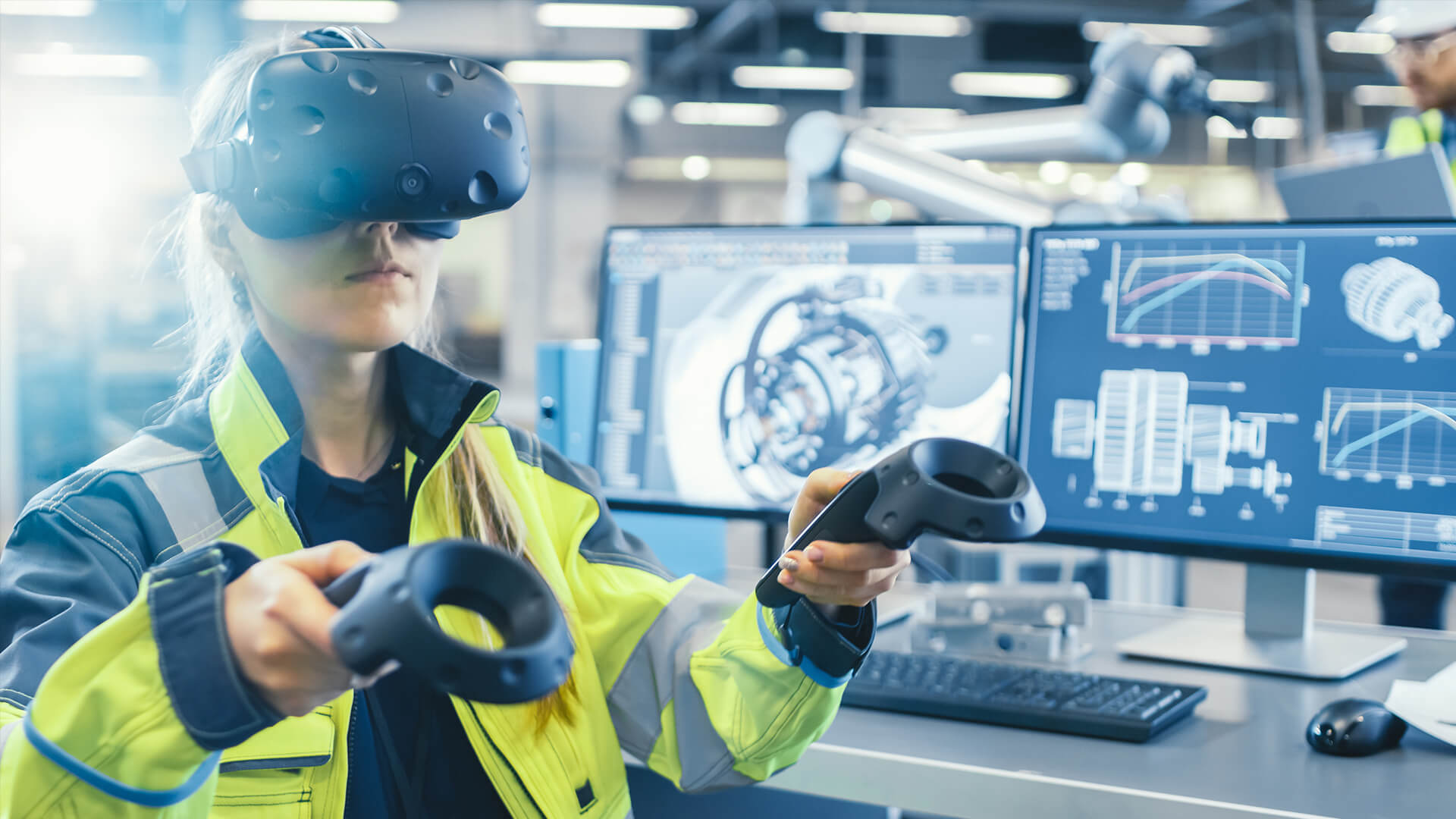 Safety is paramount in engineering disciplines where professionals often work with complex machinery, hazardous materials, and high-risk environments. As engineering graduates enter the workforce, they must possess the knowledge and skills to identify and mitigate potential hazards effectively.
Safety is paramount in engineering disciplines where professionals often work with complex machinery, hazardous materials, and high-risk environments. As engineering graduates enter the workforce, they must possess the knowledge and skills to identify and mitigate potential hazards effectively.
Practical safety training in Virtual Reality is crucial in preparing students to handle real-world challenges, preventing accidents, and ensuring the well-being of workers and the general public.
Virtual Reality Safety Training
Virtual Reality (VR) safety training is a cutting-edge approach that leverages immersive technology to simulate hazardous scenarios in a controlled and risk-free environment.
By replicating real-life situations, VR safety training allows engineering students to practice safety protocols, emergency responses, and critical decision-making without exposing them to actual dangers.
The training can be customized to various engineering fields, such as civil engineering, mechanical engineering, chemical engineering, and more, making it highly adaptable and valuable across the discipline.
Benefits of VR Training for Engineering Students
Virtual Reality Training offers an innovative and effective approach to preparing engineering graduates for the rigors of their profession.
By providing immersive, risk-free, and engaging experiences, VR safety training equips students with the necessary skills and knowledge to prioritize safety, contributing to a safer and more efficient engineering workforce.
Enhanced Engagement: VR training captures students' attention through immersive experiences, fostering active learning and better knowledge retention.
Realistic Simulations: The virtual environments closely mimic real-world scenarios, giving students a true-to-life experience of handling safety challenges.
Risk-Free Learning: Students can make mistakes and learn from them without facing any real-world consequences, building their confidence and competence.
Repetitive Practice: VR allows students to repeat training sessions, reinforcing safety protocols until they become second nature.
Interactivity and Feedback: Students receive real-time feedback, allowing them to improve their performance and understanding of safety procedures.
Cost and Time Efficiency: VR safety training reduces the need for expensive physical setups and minimizes downtime in practical training.
Here is a case study, highlighting How the University of California, San Diego is Acing Robotics Engineering Training with Virtual Reality.
Challenges and Limitations of VR Training in Engineering
Initial Setup Costs: Implementing VR safety training requires a considerable investment in VR hardware and software, which may pose a financial challenge for some educational institutions.
Technical Requirements: Maintaining and upgrading VR equipment demands technical expertise and ongoing support, adding complexity to the training process.
Immersive Realism: While VR simulations strive to be as realistic as possible, some scenarios may not perfectly mimic real-world complexities, impacting the level of realism for certain specialized engineering practices.
Limited Physical Interaction: VR may not fully replicate the physical experience of handling certain engineering tools or equipment, potentially leading to skill gaps in specific domains.
Motion Sickness: Some students may experience motion sickness or discomfort during prolonged VR sessions, affecting the effectiveness of the training.
Despite these challenges, the continuous advancement of VR technology and ongoing research in VR safety training holds promise for overcoming these limitations and further enhancing the safety training experiences for engineering graduates.
Virtual Reality Medical Training Simulation for Medical Graduates
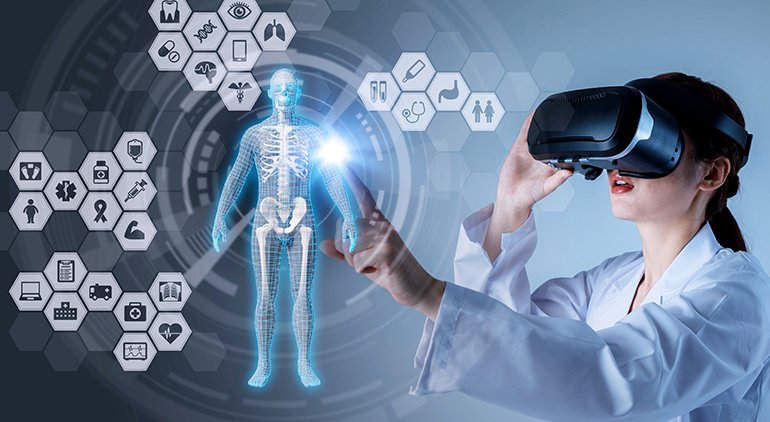 Hands-on experience is a crucial aspect of medical education as it enables medical graduates to develop essential clinical skills, improve decision-making abilities, and gain confidence in their abilities.
Hands-on experience is a crucial aspect of medical education as it enables medical graduates to develop essential clinical skills, improve decision-making abilities, and gain confidence in their abilities.
However, providing extensive hands-on training with real patients can be challenging due to ethical, safety, and logistical concerns.
As a result, medical schools have sought innovative methods to complement traditional training, and Virtual Reality (VR) has emerged as a valuable tool to bridge this gap.
Virtual Reality and its Role in Medical Training Simulation
Virtual Reality in medical training simulation offers a transformative approach to replicating diverse clinical scenarios in a controlled and safe environment.
Utilizing high-fidelity simulations, VR allows medical graduates to interact with virtual patients, medical equipment, and procedures realistically.
The immersive nature of VR enables trainees to experience a sense of presence, promoting engagement and deep learning as they navigate complex medical situations.
"Experience the future of Higher Education with Virtual Reality Training - Embrace innovation, elevate learning, and transform your academic journey today!"
Advantages of using VR for Medical Training
Virtual Reality Medical Training Simulation offers medical graduates an immersive and safe learning environment to acquire essential clinical skills and enhance patient care.
By embracing VR technology responsibly, medical schools and healthcare institutions can revolutionize medical education, fostering competent, empathetic, and skilled medical professionals who are well-prepared to address the challenges of modern healthcare.
Risk-Free Practice: Medical VR training provides a safe space for medical graduates to practice procedures without the risk of harm to real patients, reducing potential medical errors during the learning process.
Realistic Simulations: VR enables the creation of realistic medical scenarios, including virtual reality surgery training, diagnostic challenges, and patient interactions, providing an authentic experience that closely mimics real-life situations.
Repetitive Learning: Trainees can repeat VR simulations multiple times, allowing them to refine their skills and knowledge until they achieve proficiency.
Interactivity and Feedback: VR medical simulations offer instant feedback, guiding medical graduates to make informed decisions and improve their performance.
Customizable Training: VR simulations can be tailored to meet the specific needs of medical specialties, enabling focused training in areas like cardiology, surgery, emergency medicine, and more.
Team Training: VR simulations can facilitate collaborative training, allowing medical professionals from different disciplines to work together in simulated medical scenarios, enhancing teamwork and communication skills.
Here is another case study, highlighting how a prominent medical school, the University of Washington Seattle, and the U.W. Harborview Burn Center integrated VR medical training into its curriculum, leading to improved clinical competencies, and confidence among graduates in healing patients.
Ethical Considerations and Potential Concerns of VR Medical Training
Ethical considerations and continuous improvement of VR simulations will ensure that this technology remains a valuable asset in shaping the future of medical training.
Informed Consent: Ethical considerations arise when exposing medical trainees to sensitive or distressing virtual patient scenarios. Ensuring informed consent and psychological support becomes essential to avoid undue stress.
Bias in Virtual Patient Models: Developers must strive to create inclusive and unbiased virtual patient models that accurately represent diverse patient populations.
Balancing VR and Real Patient Interaction: While VR can be a valuable supplement to traditional training, it should not replace essential clinical experiences with real patients.
Data Privacy and Security: Protecting patient data in VR medical simulations is critical to maintaining confidentiality and compliance with medical ethics.
Motion Sickness and Simulator Sickness: Some medical graduates may experience motion sickness or simulator sickness during VR training, affecting their ability to learn effectively.
Virtual Reality in Science Education for Science Graduates
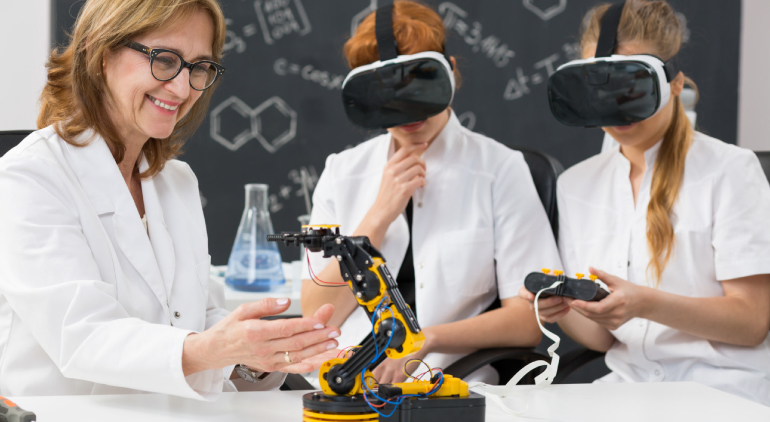 Practical learning is at the core of science education, as it fosters critical thinking, problem-solving skills, and a deeper understanding of scientific principles.
Practical learning is at the core of science education, as it fosters critical thinking, problem-solving skills, and a deeper understanding of scientific principles.
However, traditional laboratory experiences can be limited by equipment availability, time constraints, and safety concerns.
To address these challenges and enrich science education, Virtual Reality (VR) offers a powerful solution by immersing science graduates in virtual laboratories and environments that closely simulate real-world experiments and phenomena.
Utilizing Virtual Reality to Enhance Science Education
Virtual Reality serves as a versatile tool for science education, enabling science graduates to engage in hands-on experiments and explorations that might be otherwise impractical or hazardous.
Through interactive simulations and 3D visualizations, VR allows students to manipulate variables, observe dynamic processes, and conduct experiments in a controlled, risk-free setting.
Additionally, VR facilitates access to otherwise inaccessible locations, such as distant planets, deep ocean ecosystems, or microscopic cellular structures, broadening the scope of scientific exploration.
Exploring the Benefits of VR in Science Learning
By incorporating VR into science curricula, educational institutions can foster a new generation of scientifically literate and innovative individuals, better prepared to tackle the complex challenges of the future.
Immersive Learning Experience: VR immerses science graduates in realistic, 3D environments, enhancing their sense of presence and promoting active learning.
Accessible and Diverse Simulations: VR makes it possible to create a wide range of simulations covering various scientific disciplines, making learning more inclusive and engaging.
Visualization of Abstract Concepts: Complex scientific concepts can be visualized and simplified through VR, helping students grasp abstract ideas more easily.
Interactivity and Inquiry-Based Learning: VR encourages curiosity and experimentation, enabling science graduates to explore scientific phenomena actively.
Collaboration and Teamwork: VR simulations can facilitate collaborative learning, fostering teamwork and communication skills among science students.
Here is a case study demonstrating how Penn State’s innovative approach is revolutionizing Geoscience education through Virtual Reality.
 Get the App from Meta Store: Download Now
Get the App from Meta Store: Download Now
Prospects of VR in Science Education
As VR technology continues to advance, it will play an increasingly crucial role in shaping the future of science education and inspiring a passion for scientific exploration among the next generation of scientists.
Advancements in VR Technology: As VR technology continues to evolve, the realism, interactivity, and accessibility of virtual science experiences will improve significantly.
Integration with AI and Big Data: The combination of VR with artificial intelligence and big data analytics can create personalized learning experiences tailored to individual science graduates' needs and learning styles.
Remote and Distributed Learning: VR can facilitate remote and distributed science education, enabling students from diverse geographic locations to participate in collaborative scientific endeavors.
Virtual Field Trips: VR will enable science graduates to explore remote or hazardous locations virtually, enhancing their understanding of ecological systems and geological formations.
Augmented Reality (AR) Integration: AR integration with VR can merge virtual and real-world elements, enabling science graduates to overlay digital information onto real environments, creating new possibilities for experiential learning.
Cross-disciplinary Applications of Virtual Reality Training
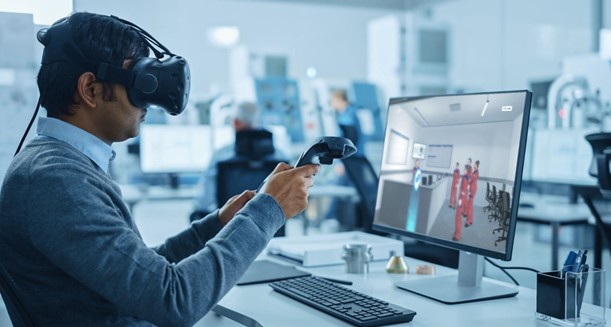 Virtual Reality Training is not confined to specific academic disciplines. Rather, it offers cross-disciplinary applications that transcend the boundaries of engineering, medical, and science fields.
Virtual Reality Training is not confined to specific academic disciplines. Rather, it offers cross-disciplinary applications that transcend the boundaries of engineering, medical, and science fields.
As an innovative and versatile educational tool, Virtual Reality (VR) has the potential to revolutionize higher education by providing experiential learning experiences across various domains.
Overlapping Benefits of VR Training across Engineering, Medical, and Science fields
Virtual Reality in education and training offers a plethora of benefits that extend beyond specific disciplines, making it a valuable tool for engineering, medical, and science fields alike:
Risk-Free Practice: VR enables safe, risk-free practice of complex procedures and experiments, benefiting engineering, medical, and science graduates as they hone their skills without real-world consequences.
Realistic Simulations: The immersive nature of VR provides realistic scenarios that closely mirror actual situations encountered in engineering, medical, and scientific practices, enhancing the authenticity of training experiences.
Enhanced Engagement and Retention: VR's interactive nature captivates learners across all disciplines, leading to improved engagement and better retention of information and skills.
Interdisciplinary Problem-Solving: VR training encourages collaboration and problem-solving among students from diverse disciplines, fostering a holistic approach to addressing complex challenges.
Customization and Adaptability: VR training can be tailored to suit the specific needs of each field, ensuring that engineering, medical, and science graduates receive relevant and targeted training experiences.
Collaboration Opportunities for Interdisciplinary Training Programs
Virtual Reality presents unique opportunities for interdisciplinary collaboration in higher education:
Team-based Training: Collaborative VR experiences can bring together students from engineering, medical, and science fields to work as a team, simulating real-world interdisciplinary projects and enhancing communication and teamwork skills.
Shared Learning Experiences: By participating in joint VR training sessions, students from various disciplines can gain insights into each other's expertise, fostering a deeper understanding of how their knowledge complements one another.
Addressing Complex Challenges: Interdisciplinary VR training enables students to tackle complex, real-world problems that require expertise from multiple fields, preparing them to work on interdisciplinary projects in their future careers.
Innovation and Research: Collaboration between engineering, medical, and science graduates in VR-based research projects can lead to innovative solutions and discoveries at the intersection of these fields.
Showcasing VR as a Versatile Tool for Higher Education
As educational institutions embrace VR and develop interdisciplinary training programs, they open up exciting possibilities for the future of learning, research, and innovation, preparing graduates to excel in their careers and make meaningful contributions to society.
Practical Learning Across Disciplines: VR offers practical learning experiences beyond traditional classroom settings, promoting active engagement and experiential learning for students in engineering, medical, and science programs.
Access to Specialized Resources: VR can provide access to specialized laboratories, advanced equipment, and environments that may not be available in every educational institution, leveling the playing field for students in different regions.
Remote Learning Possibilities: VR training enables remote and distributed learning, allowing students to access high-quality education without being physically present on campus.
Career Readiness: VR equips graduates from engineering, medical, and science fields with practical skills and experiences that better prepare them for real-world challenges in their respective industries.
Lifelong Learning: VR can facilitate ongoing professional development and continuous learning opportunities for graduates in all disciplines, allowing them to stay up-to-date with the latest advancements in their fields.
Challenges and Considerations in Implementing Virtual Reality Training
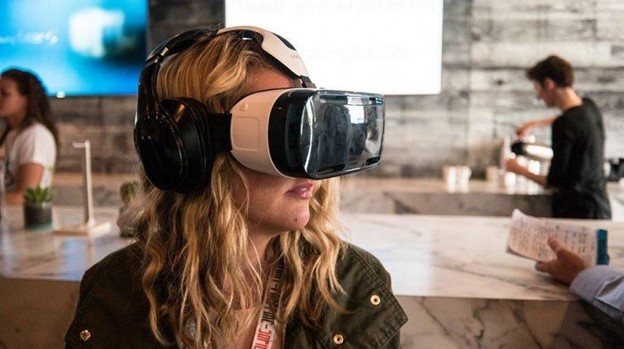 Virtual Reality Training offers significant benefits for education, but its implementation comes with its own set of challenges and considerations. Some of them include-
Virtual Reality Training offers significant benefits for education, but its implementation comes with its own set of challenges and considerations. Some of them include-
Cost and Accessibility of VR Technology in Educational Institutions
While Virtual Reality (VR) Training offers transformative benefits for higher education, the implementation of this cutting-edge technology comes with specific challenges related to cost and accessibility.
As educational institutions explore the integration of VR into their curricula, considerations about affordability and equitable access for all students are crucial.
Initial Investment: Implementing VR training requires a significant initial investment in acquiring VR hardware, software, and related infrastructure, which may strain the budget of educational institutions.
Upkeep and Maintenance: VR technology requires regular maintenance and updates to ensure optimal performance, adding ongoing operational costs that need to be budgeted.
Equity Concerns: Unequal access to VR technology may create disparities among students, with some having better access to training opportunities than others.
Scalability: Scaling up VR training to accommodate large cohorts of students may pose logistical and financial challenges for institutions.
Potential Resistance to Adopting VR in Academic Settings
Virtual Reality (VR) holds immense potential to revolutionize higher education, but its adoption in academic settings can face various challenges and resistance from stakeholders.
Faculty Training: Some educators may be hesitant or unfamiliar with VR technology, necessitating proper training to effectively integrate it into their teaching methodologies.
Curriculum Integration: Aligning VR training with existing curricula and educational standards requires careful planning and coordination among faculty and curriculum developers.
Perception of VR as a Gimmick: Skepticism about the effectiveness of VR as a legitimate educational tool may hinder its widespread adoption.
Overcoming Resistance to Change: Resistance to adopting new technologies and methodologies in traditional academic settings may slow down the integration of VR training.
Ensuring Inclusivity and Accessibility for All Students
As Virtual Reality Training gains momentum in higher education, it is crucial to ensure that this transformative technology remains inclusive and accessible to all students to create an equitable educational environment where everyone can benefit from VR training.
Physical and Cognitive Accessibility: VR hardware and interfaces must be designed to accommodate students with physical disabilities or cognitive impairments.
Addressing Motion Sickness: Some students may experience motion sickness or discomfort during VR sessions, necessitating alternative training methods or strategies.
Internet Bandwidth and Infrastructure: Access to high-speed internet and robust IT infrastructure is crucial for seamless VR experiences, which may be challenging in certain regions or institutions.
Language and Cultural Considerations: VR training materials should be designed with consideration for the diverse languages and cultural backgrounds of students.
Balancing Traditional Teaching Methods with VR Training
Complementing, Not Replacing: VR training should be seen as a complementary tool to traditional teaching methods rather than a complete replacement, ensuring a balanced and holistic learning experience.
Integration Challenges: Integrating VR into existing courses requires thoughtful planning to avoid overloading students with excessive technology use.
Learning Objectives Alignment: VR training should align with specific learning objectives, ensuring that it enhances and supports the educational outcomes of the course.
Instructor Support: Educators may need additional resources and support to effectively integrate VR into their teaching, including access to technical support and lesson plans.
The Future of Virtual Reality in Higher Education
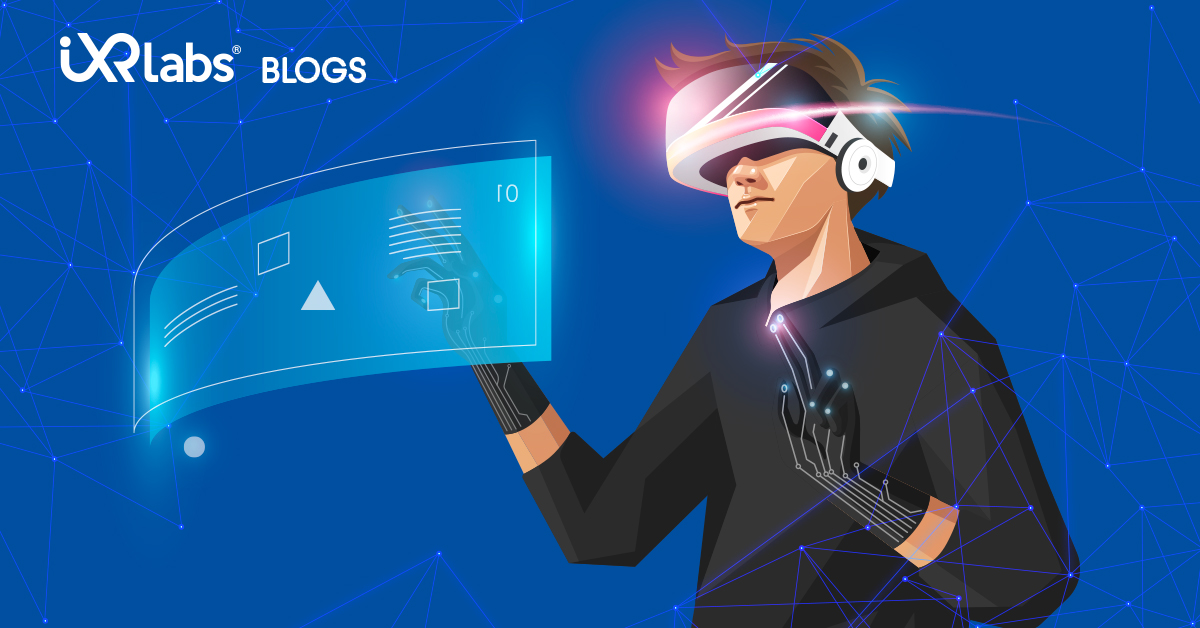 The future of VR for higher education is promising, with predictions pointing toward widespread adoption and seamless integration into various academic disciplines.
The future of VR for higher education is promising, with predictions pointing toward widespread adoption and seamless integration into various academic disciplines.
Predictions for the Integration and Expansion of VR in Academia
The adoption of VR in educational settings is expected to undergo significant changes, revolutionizing the way students learn and educators teach. Here are some key predictions for the integration and expansion of VR in academia:
Mainstream Adoption: Virtual Reality is expected to become more mainstream in higher education as technological advancements make VR hardware more accessible and affordable.
Curricular Integration: VR will be seamlessly integrated into various academic disciplines, ranging from STEM fields to liberal arts, as institutions recognize its potential to enhance learning experiences.
Virtual Classrooms and Labs: Virtual classrooms and laboratories will become increasingly prevalent, allowing students to participate in interactive lectures, group discussions, and hands-on experiments from remote locations.
Global Collaboration: VR will enable students and faculty from different parts of the world to collaborate on projects, fostering a global learning community and promoting cultural exchange.
Professional Development: VR will extend beyond student education, offering opportunities for faculty training and professional development through simulated workshops and teaching experiences.
Research and Development Efforts in VR Education
With VR gaining traction in education, research and development efforts are paving the way for innovative applications and enhanced learning experiences.
Educational institutions, technology companies, and researchers are continuously exploring the potential of VR to revolutionize teaching and learning.
Here are some key research and development trends shaping the future of VR education:
Enhancing Immersive Realism: Research will focus on improving the realism of VR environments, ensuring that virtual experiences closely replicate real-world scenarios.
Personalized Learning: Efforts will be made to develop VR experiences that adapt to individual learning styles and preferences, providing tailored learning paths for each student.
Neuroscience and Learning: Research will explore the intersection of neuroscience and VR to optimize learning outcomes by understanding how the brain processes information in virtual environments.
AI Integration: Artificial Intelligence will be integrated into VR educational platforms to provide intelligent feedback, personalized tutoring, and data-driven insights on student progress.
Assessment and Evaluation: Researchers will work on developing reliable methods to assess and evaluate student performance in VR environments, ensuring the accuracy and validity of learning outcomes
How VR can revolutionize Higher Education and Student Learning Outcomes?
By harnessing the power of VR, higher education institutions can usher in a new era of student-centric and innovative learning experiences.
VR's ability to engage, immerse, and empower learners redefines education, preparing students to meet the challenges of the future with confidence, competence, and a passion for lifelong learning.
As VR continues to evolve and integrate into academic curricula, its transformative impact on higher education and student learning outcomes will undoubtedly be one of the defining chapters in the history of education.
Here's how VR can bring about a profound revolution in higher education and enhance student learning outcomes:
Engaging and Active Learning: VR's immersive nature promotes active learning, leading to increased engagement and retention of complex concepts.
Experiential Learning: VR facilitates experiential learning by allowing students to interact with and explore subject matter firsthand, fostering a deeper understanding of theoretical concepts.
Skill Development: Virtual simulations provide a safe space for students to practice and refine their skills, preparing them for real-world challenges and professional environments.
Inclusive Education: VR can bridge accessibility gaps and create an inclusive learning environment for students with diverse learning needs and abilities.
Interdisciplinary Collaboration: VR fosters interdisciplinary collaboration, encouraging students from different fields to work together and solve complex problems collectively.
Remote and Flexible Learning: VR enables remote and flexible learning opportunities, enabling students to access high-quality education regardless of their physical location.
Lifelong Learning and Continuous Improvement: VR-based professional development and continuing education programs will cater to the needs of lifelong learners and professionals seeking to update their skills
Conclusion
In conclusion, Virtual Reality Training has the potential to change the concepts of higher education for engineering, medical, and science graduates.
Its immersive nature fosters active learning, enhances critical thinking, and provides risk-free practice, preparing graduates for real-world challenges.
Engineering students benefit from VR safety training, promoting workplace safety, Medical graduates use VR for realistic simulations, improving patient care and clinical skills, and. Science graduates explore complex phenomena in a hands-on, risk-free environment.
Encouraging institutions to invest in Virtual Reality Training will empower students with valuable experiences, interdisciplinary collaboration, and essential skills for their professional journeys.
Embracing VR is a strategic investment in shaping a brighter and more innovative future for education and preparing graduates to excel in their respective fields.
At iXR Labs, we specialize in crafting exclusive and cutting-edge VR content for students in the fields of Engineering, Medical, and Sciences.
Our mission is to transform the way students interact with and experience reality by providing immersive and innovative learning solutions by offering customized VR experiences that cater to the specific needs of educational institutions, enabling them to establish state-of-the-art VR Labs.
If you are seeking to equip your college or university with a technical edge or wish to explore the possibilities of setting up VR Labs in your institution, you can visit our website at www.ixrlabs.com.
Discover how our VR solutions can enhance student engagement, foster experiential learning, and prepare the next generation of professionals for success in their respective disciplines.
Till then happy exploring!
.png)
.png)



